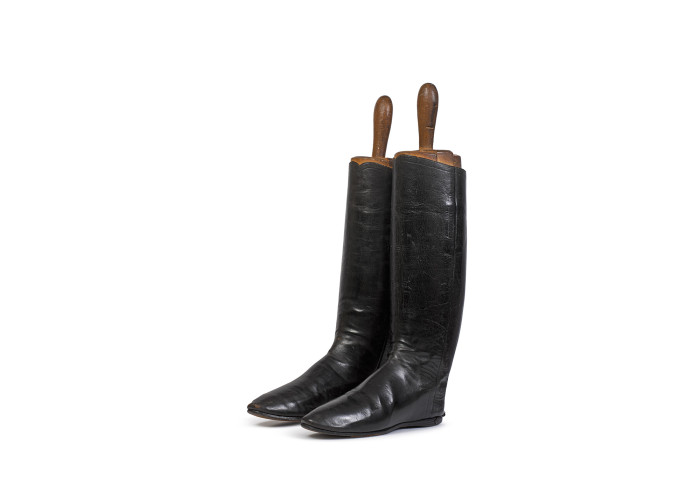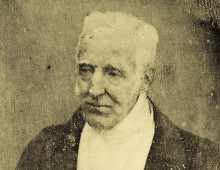A pair of ‘Wellington boots’
Theme: French revolution, French revolutionary and Napoleonic wars (1792-1815)
These are the original ‘Wellington boots’, designed for the Duke of Wellington to be both practical and fashionable. They were adapted from the ‘Hessian’ boots previously worn by British officers to allow the wearing of new lightweight linen trousers rather than traditional woollen ones. They were cut lower to make riding more comfortable, and no longer had a tassel. After the Duke’s victory at Waterloo, this style of boot became extremely fashionable and spread through London society, eventually inspiring the modern ‘welly’.
These are the original ‘Wellington boots’, designed for the Duke of Wellington to be both practical and fashionable. They were adapted from the ‘Hessian’ boots previously worn by British officers to allow the wearing of new lightweight linen trousers rather than traditional woollen ones. They were cut lower to make riding more comfortable, and no longer had a tassel. After the Duke’s victory at Waterloo, this style of boot became extremely fashionable and spread through London society, eventually inspiring the modern ‘welly’.
Arthur Wellesley, 1st Duke of Wellington (1769-1852) is remembered as one of Britain’s most successful military commanders. Born in Dublin, into an aristocratic family, he went on to study (rather unsuccessfully) at Eton before attending military school. Despite Wellington’s initial reluctance to embark on a military career, it went on to bring him great fame and success.
Wellington’s most notable campaigns took place during the Napoleonic Wars, which culminated in the defeat of Napoleon, the Emperor of France, in 1815. This significant victory brought Wellington a celebrity – almost cult – status which remains to this day.
In addition to his military career, Wellington also served twice as Prime Minister, from 1828 – 1830, and again in 1834 (for just under a month). His conservative policies were at odds with the popular liberal movements of the time and the growing popular unrest and agitation for political change.
He strongly opposed the Great Reform Act, which called for a fairer voting system, and believed Britain should be ruled by the upper classes. This opposition brought down his administration. For a time, his carriage was booed in the streets, and iron shutters had to be installed on the windows of his London house, to prevent stone-throwing protestors from breaking the windows. However, time and the support of the young Queen Victoria, who viewed the Duke as a father figure, helped restore his reputation.
On his death in 1852, at the age of 83, Wellington was once again hailed as a hero and given a state funeral. He was buried in St Paul’s Cathedral next to Lord Horatio Nelson.
Did you know..?
Wellington became known as the ‘Iron Duke’ due to his uncompromising style and character both as a military commander and politician.
Use our Classroom resources to investigate this object further.
Highlights:
- Using objects, artworks and other sources to find out about the past
- Objects personified
- Fascinating facts
And much more…
- Related resources
-
Did you know..?
Wellington became known as the ‘Iron Duke’ due to his uncompromising style and character both as a military commander and politician.
-
Education overview
You can access a range of teachers resources related to this object and more on our education page.
Please also see our glossary of terms for more detailed explanations of the terms used.
-
Curatorial info
- Originating Museum: Walmer Castle
- Creator: George Hoby
- Material: Calfskin leather
- Creation Place: London
-
Use this image
You can download and use the high resolution image under a Creative Commons licence, for all non-commercial purposes, provided you attribute the copyright holder.
- Rights Holder: English Heritage. Photography Relic Imaging Ltd.
- License Type: Creative Commons
- Related Objects
Find it here
This object is in the collection of Walmer Castle and Gardens – English Heritage






